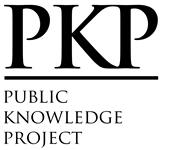TASAWUF MODERN MENURUT HAMKA; STUDI ANALISIS TERHADAP TASAWUF KLASIK
Abstract
Sufism has developed in the Islamic world since the 2nd century Hijriah. Many of the companions and tabi'in figures were Sufism groups, including Abu Ubaidah Al-Jarrah, Abu Dzar Al-Ghifari, Salman Al-Farisi, Abdullah Ibn Mas'ud, and many more. Initially Sufism emerged as a criticism of various problems that occur in life. Whether it was the aristocratic love of wealth, or the endless debates of religious scholars on trivial matters. So there are some groups who want to stay away from worldly problems to be alone and get closer to Allah SWT. Their initial intentions were good. But over time, with the mixing of cultures, traditions, and thoughts from non-Arab civilizations, the practice of Sufism began to change. No longer running in accordance with Islamic law, and even began to deviate far. The result is a mistaken view of Sufism. So in this paper, the author wants to try to explain the concept of 'modern Sufism' which was initiated by Hamka and to give it a difference from the concept of classical Sufism. With the library research method, the authors found that there was a new principle in the Hamka concept. He no longer thinks that Sufism is away from the world and draws closer to Allah alone, but even as an approach to Allah without leaving the world.
Downloads
References
Abdullah. (2013). Studi Tentang Modernisme Indonesia. Sulesana: Jurnal Wawasan Keislaman, 14-34.
Al-Kumayi, S. (2013). Gerakan Pembaruan Tasawuf di Indonesia. Theologia, 247-278.
Anwar, R. (2009). Akhlak Tasawuf. Bandung: Pustaka Setia.
Bagir, H. (2019). Mengenal Tasawuf. Jakarta: Noura Books.
Basori, R. (2008). The Founding Father; Pesantren Modern Indonesia, Jejak Langkah KH A. Wahid Hasyim. Jakarta: Inceis.
Basuni, I. (1911). Nasy'ah al-Tasawuf al-Islamiy. Mesir: Daar Al-Ma'arif.
Chamami, R. (2010). Pendidikan Neomodernisme: Telaah Pemikiran Fazlur Rahman. Semarang: Walisongo Press.
Hamka. (2016). Taswuf Modern. Jakarta: Republika.
Nasution, H. (1973). Falsafah dan Mistisme dalam Islam. Jakarta: Bulan Bintang.
Nasution, H. (1996). Pembaharuan Dalam Islam: Sejarah Pemikiran dan Gerakan. Jakarta: Bulan Bintang.
Surakhmad, W. d. (2003). Mengurai Benang Kusut Pendidikan: GLobalisasi dan Tantangannya untuk Reformasi Pendidikan Nasional. Yogyakarta: Pustaka Pelajar.
Tamara, N. (1996). Hamka di Mata Hati Ummat. Jakarta: Pustaka Sinar Harapan.
Umarie, B. (1996). Sistematika Tasawuf. Solo: Ramadlani.




.png)








